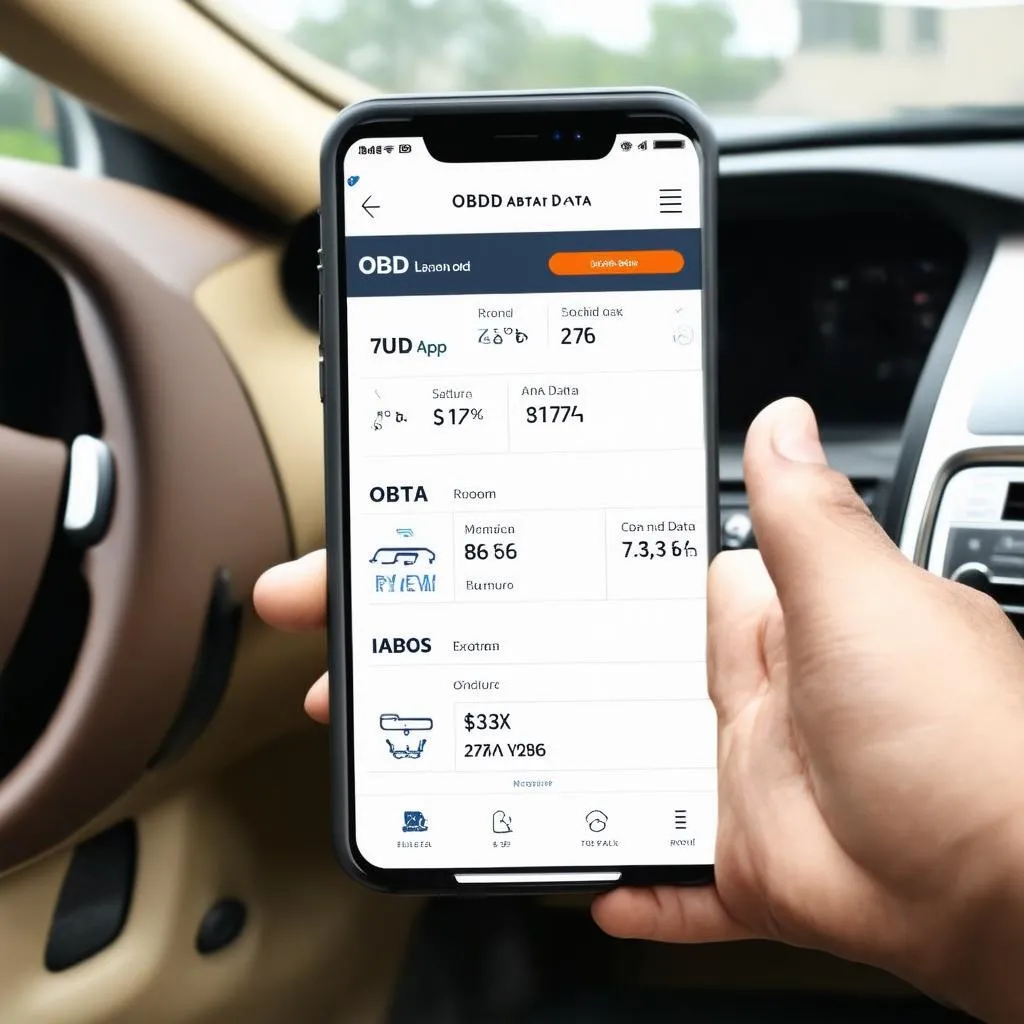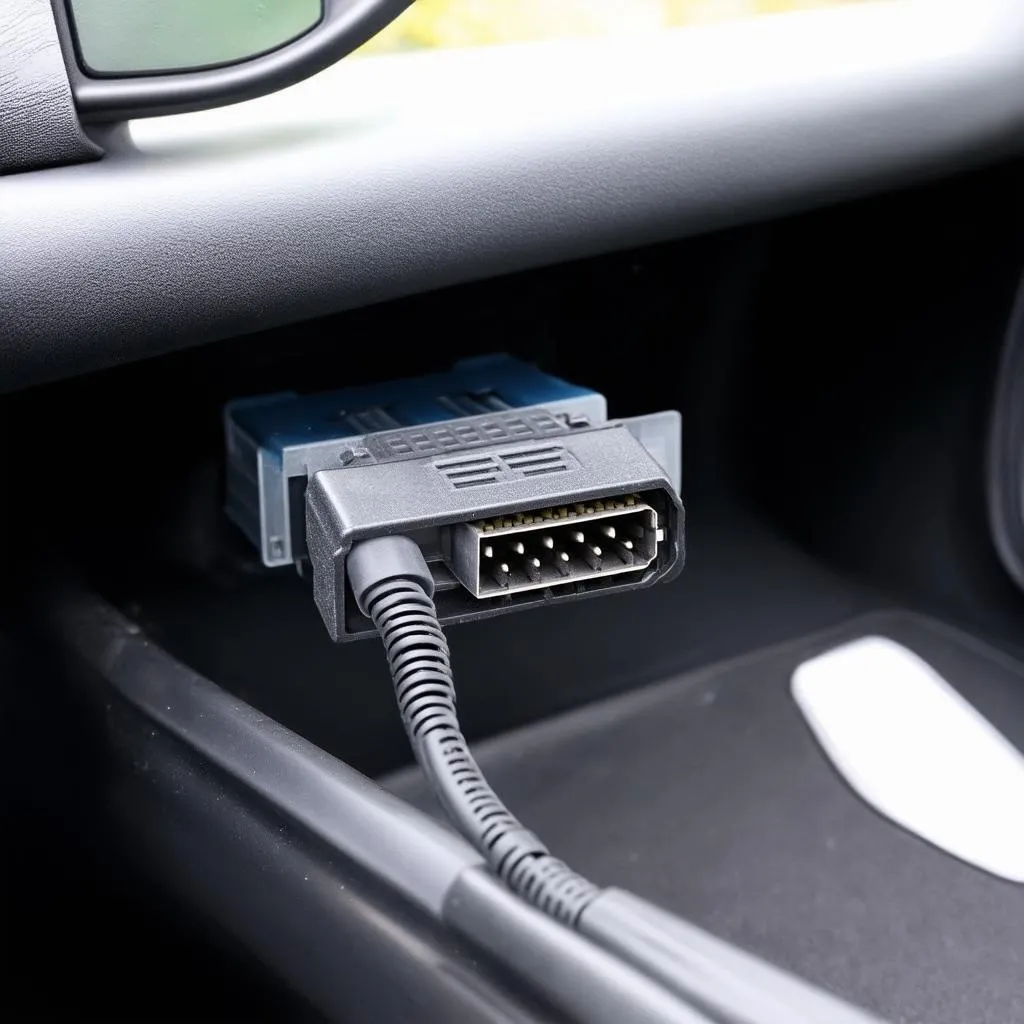“A stitch in time saves nine,” goes the proverb. And when it comes to your car, a little preventive care can go a long way. But how do you know if your car needs attention before problems arise? That’s where OBD apps come in. These apps connect to your car’s onboard diagnostics system (OBD) and can provide valuable insights into your car’s health.
What is an OBD App?
In essence, an OBD app functions as a translator between your car and your smartphone. It leverages the OBD-II port present in most vehicles manufactured after 1996, to gather data from the car’s computer. This data can be interpreted and displayed in a user-friendly format, giving you real-time information about your car’s performance.
Why Should You Use an OBD App?
Imagine you’re driving down the road and suddenly, your car starts sputtering. You have no idea what’s going on. In such a scenario, an OBD app can be your savior. It can identify the problem, and even provide you with helpful tips on how to fix it.
Beyond immediate troubleshooting, OBD apps also offer a range of benefits like:
- Early Detection of Issues: By monitoring crucial parameters like engine temperature, fuel consumption, and emissions, OBD apps can alert you to potential problems before they become serious.
- Enhanced Driving Efficiency: Optimize your driving habits by analyzing real-time data on your fuel consumption and acceleration, contributing to better fuel economy.
- Performance Monitoring: Track engine performance, acceleration, and other vital metrics, allowing you to fine-tune your driving experience.
- Enhanced Safety: Some OBD apps can even provide real-time location tracking and emergency assistance, adding a layer of security to your driving experience.
What Are the Best OBD Apps in 2018?
As with any technology, the OBD app market is flooded with options. But not all apps are created equal. Here are some of the most popular and highly-rated OBD apps available in 2018:
1. Torque Pro:
Widely considered the gold standard for OBD apps, Torque Pro offers an extensive feature set and customizable dashboards. You can configure the app to display various data points relevant to your specific car model, making it an invaluable tool for both casual drivers and car enthusiasts.
2. OBD Fusion:
This app is known for its comprehensive diagnostics capabilities and advanced logging features. OBD Fusion excels at identifying and diagnosing complex issues, making it a popular choice among mechanics and seasoned car enthusiasts.
3. Car Scanner:
If you’re looking for a user-friendly and budget-friendly option, Car Scanner is an excellent choice. While not as feature-rich as Torque Pro or OBD Fusion, it provides essential diagnostic functionalities and is easy to navigate.
4. DashCommand:
This app focuses on delivering a sleek and intuitive user interface. DashCommand offers a broad range of data visualization options and integrates seamlessly with other apps on your smartphone.
5. Engine Link:
This app stands out for its ability to analyze and interpret diagnostic codes, providing insightful explanations that can help you understand the underlying issue.
Finding the Right OBD App for You
Selecting the best OBD app depends on your individual needs and preferences. Consider the following factors:
- Your Car Model: Some OBD apps are compatible with more car models than others. Make sure the app you choose supports your specific car make and model.
- Features: Do you need advanced diagnostics or are you simply looking for basic performance data? Choose an app that offers the features you require.
- Price: Some OBD apps are free, while others require a paid subscription. Compare prices and features before making a decision.
Pro Tip: Before you purchase an OBD app, make sure your car has an OBD-II port. Most cars manufactured after 1996 have this port, but it’s always a good idea to double-check.
How to Use an OBD App
Once you’ve chosen an OBD app, using it is relatively simple. Here are the basic steps:
- Download and Install the App: Download the app from your smartphone’s app store and install it.
- Connect the Bluetooth Adapter: OBD apps require a Bluetooth adapter to connect to your car’s OBD-II port. Plug the adapter into the port and pair it with your smartphone.
- Configure the App: Once the connection is established, configure the app to display the data points you are interested in.
- Start Monitoring: You can now monitor your car’s performance data and receive alerts for any potential issues.
Frequently Asked Questions
Can OBD apps diagnose all car problems?
OBD apps are not magic solutions. They can identify and diagnose a wide range of problems, but they are not foolproof. Some complex issues may require a professional mechanic’s expertise.
What are some of the most common OBD codes?
The most common OBD codes include:
- P0171: System Too Lean (Bank 1)
- P0174: System Too Lean (Bank 2)
- P0300: Random/Multiple Cylinder Misfire Detected
- P0420: Catalyst System Efficiency Below Threshold (Bank 1)
- P0455: EVAP System Leak Detected
What can I do if I get an OBD code?
If you receive an OBD code, you can consult the app’s documentation or an online database to understand the meaning of the code. You can then take steps to address the problem, such as:
- Resetting the Code: Some codes can be reset by simply clearing the diagnostic data.
- Replacing a Faulty Sensor: If the code indicates a faulty sensor, you may need to replace it.
- Taking Your Car to a Mechanic: For complex issues, it’s always a good idea to consult a qualified mechanic.
How often should I use an OBD app?
While regular use is recommended, it’s not necessary to constantly monitor your car’s data. Use the app to check your car’s health at least once a month or when you suspect a problem.
Are OBD apps safe?
Most reputable OBD apps are safe and secure. They are designed to access only the data necessary for diagnostics and do not collect or share your personal information.
What is the best way to learn about OBD apps?
Start by reading reviews and comparing features of different apps. You can also watch videos or read articles on how to use OBD apps.
Conclusion
OBD apps are a powerful tool for car owners who want to stay on top of their vehicle’s health. Whether you’re a seasoned mechanic or a casual driver, these apps can provide valuable insights and help you prevent costly repairs.
By choosing the right OBD app and using it effectively, you can ensure your car is running smoothly and efficiently.
 OBD App on Phone
OBD App on Phone
 Car with OBD Port
Car with OBD Port
Ready to start using an OBD app? Contact us today for professional help with installation and support! Whatsapp: +84767531508
Do you have any questions about OBD apps? Leave a comment below and we’ll be happy to help!
For further information on OBD apps, check out these related articles: